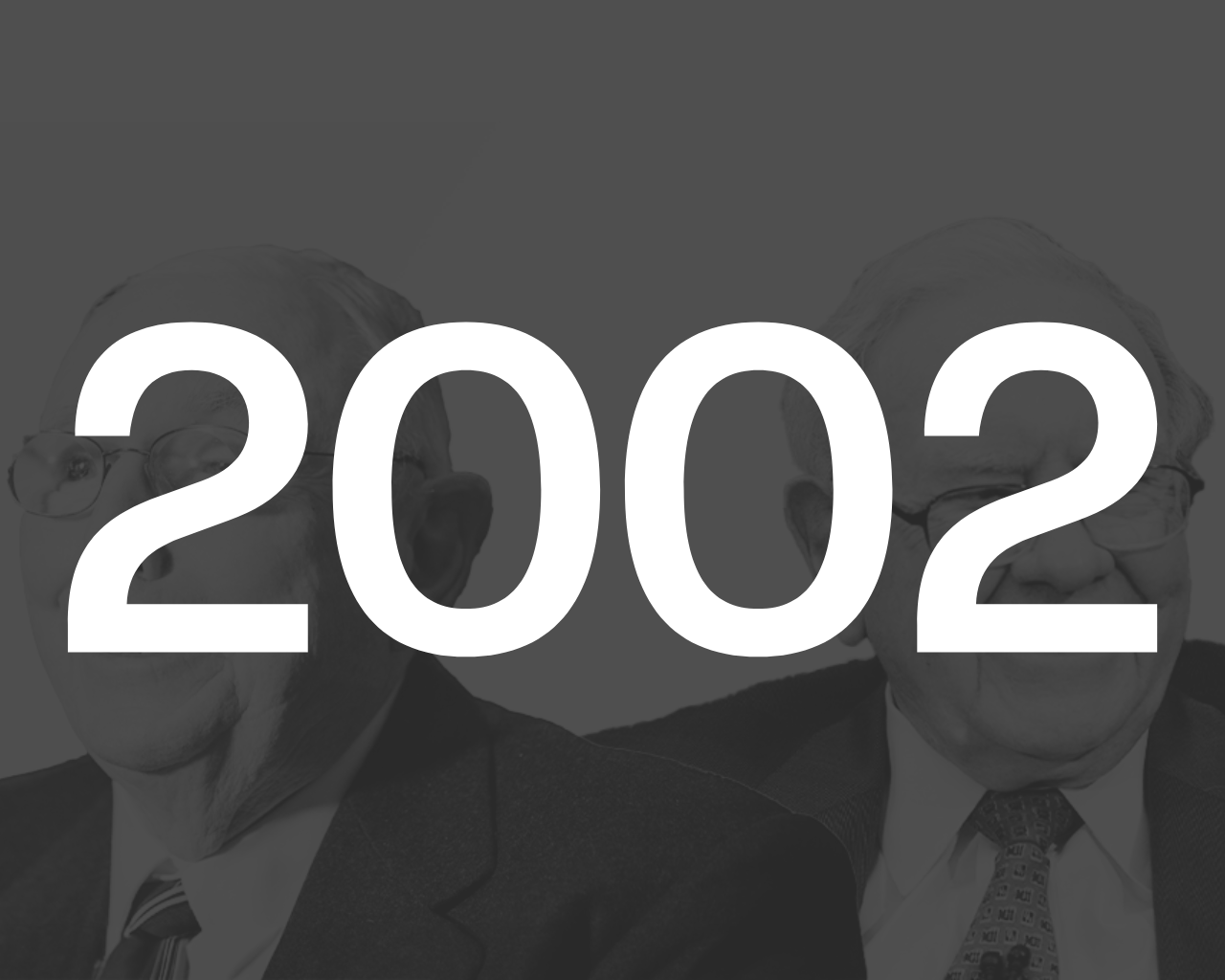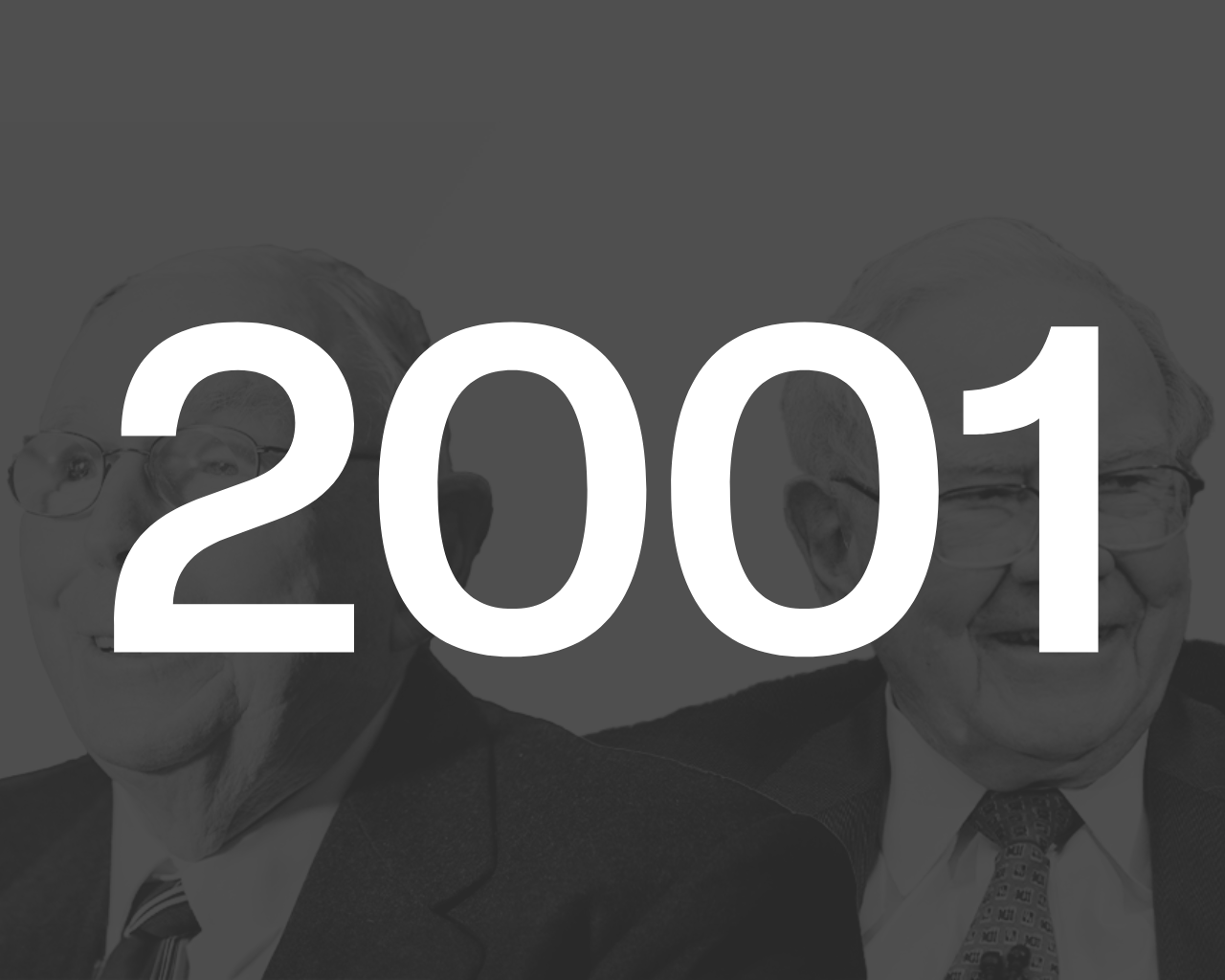1992
Click here to read the letter.🧠 Key Takeaways
Both investing in a business and choosing a life partner involve big decisions and long-term commitments. The stakes are high, which makes it essential to approach these decisions thoughtfully and with a lot of patience.
Investors have to find a balance: deploy patience and avoid the trap of short-term thinking, but also hold management accountable for delivering results over the long haul.
Value and growth are two sides of the same coin—and both are essential for understanding a company’s true intrinsic value.
Growth only benefits investors when it’s driven by investments that create more than a dollar of long-term market value for every dollar invested. Without strong returns on capital, growth can actually hurt investors by inefficiently consuming resources.
High ROIC businesses inevitably reach a point where they generate more capital than they can profitably reinvest. At that point, shareholders benefit most when the company uses the extra capital to pay dividends or buy back shares, rather than forcing growth through suboptimal investments—which would ultimately lower their ROIC.
Wealth is built by avoiding big mistakes and consistently doing sensible things over time. Steady and respectable returns compounded over the years will create substantial wealth.
✍️ Memorable Quotes
“Of all our activities at Berkshire, the most exhilarating for Charlie and me is the acquisition of a business with excellent economic characteristics and a management that we like, trust and admire. Such acquisitions are not easy to make but we look for them constantly. In the search, we adopt the same attitude one might find appropriate in looking for a spouse: It pays to be active, interested and open-minded, but it does not pay to be in a hurry.”
The best businesses—like the best spouses—are rare. Finding one that checks all the boxes, such as strong financial performance, shareholder-friendly management, and a reasonable valuation, is no easy task. These opportunities are few and far between.
Both investing in a business and choosing a life partner involve big decisions and long-term commitments. The stakes are high, which makes it essential to approach these decisions thoughtfully and with a lot of patience.
The right opportunity may take a lot of time to appear, but it’s essential to stay alert, open-minded, and ready to act when it does.
“We do not, however, see this long-term focus as eliminating the need for us to achieve decent short-term results as well. After all, we were thinking long-range thoughts five or ten years ago, and the moves we made then should now be paying off. If plantings made confidently are repeatedly followed by disappointing harvests, something is wrong with the farmer. (Or perhaps with the farm: Investors should understand that for certain companies, and even for some industries, there simply is no good long-term strategy.) Just as you should be suspicious of managers who pump up short-term earnings by accounting maneuvers, asset sales and the like, so also should you be suspicious of those managers who fail to deliver for extended periods and blame it on their long-term focus. (Even Alice, after listening to the Queen lecture her about “jam tomorrow,” finally insisted, “It must come sometimes to jam today.”)”
As investors—especially dividend investors—we regularly emphasize the importance of maintaining a long-term mindset. Patience is the most important (and most trying) ingredient in this approach.
When you invest in a company, you’re not expecting results overnight. Or, as Ari would say, “You can’t get rich by Tuesday.”
At the same time, patience has its limits. You can’t afford to wait indefinitely for a company to deliver results.
In the quote here, Buffett offers some pretty helpful guidance on how much time you should give these long-term investments to bear fruit before reconsidering your positions, suggesting a window of 5 to 10 years. Unfortunately, this timeline is much longer than most people today are willing to wait.
To put this into perspective, I recently received a comment from someone who sold SCHD after just six months because it “didn’t go anywhere.” That’s a perfect example of an investment decision made with far too short a time horizon.
While this speaks to the dangers of impatience, it’s equally important to be aware of the opposite trap: waiting endlessly for results that never materialize.
This is where Buffett’s guidance becomes critical. He reminds us that patience must eventually be rewarded.
If a company consistently underdelivers, it’s worth questioning whether it’s still worth holding onto. This is true even if the investment thesis seemed sensible in the beginning.
Referring back to Buffett’s analogy, if the farmer’s crops repeatedly fail, there might be something wrong with the farmer—or possibly even the farm itself.
Investors have to find a balance: deploy patience and avoid the trap of short-term thinking, but also hold management accountable for delivering results over the long haul.
As Buffett said: Even Alice, after hearing the Queen promise "jam tomorrow," eventually insisted, “It must come sometimes to jam today.”
“But how, you will ask, does one decide what’s “attractive”? In answering this question, most analysts feel they must choose between two approaches customarily thought to be in opposition: “value” and “growth.” Indeed, many investment professionals see any mixing of the two terms as a form of intellectual cross-dressing. We view that as fuzzy thinking (in which, it must be confessed, I myself engaged some years ago). In our opinion, the two approaches are joined at the hip: Growth is always a component in the calculation of value, constituting a variable whose importance can range from negligible to enormous and whose impact can be negative as well as positive.”
Stocks are typically categorized as either "value" or "growth," with these two approaches being on opposite ends of the spectrum.
Value stocks are typically seen as companies that are undervalued compared to their intrinsic worth, and trading at a discount despite having solid fundamentals. These stocks are considered “good, but cheap,” and the investment thesis revolves around the concept of buying them for less than they’re truly worth.
Growth stocks, on the other hand, are a different story. These companies are expected to deliver aggressive, above-average growth in their fundamentals—things like revenue, earnings, or market share.
Because of these strong growth prospects, investors are often willing to pay a premium for them, and low valuation metrics like P/E ratios aren’t as much of a concern. The focus is on the upside potential rather than the current price.
As Buffett said, though, value and growth are actually not mutually exclusive. In his view, these two approaches are "joined at the hip," meaning they are inherently connected rather than opposites.
He argues that a company’s growth prospects are essential to determining its value. In other words, when calculating a company’s intrinsic value, you have to factor in its potential to grow.
Put simply, value and growth are two sides of the same coin—and both are essential for understanding a company’s true intrinsic value.
“Growth benefits investors only when the business in point can invest at incremental returns that are enticing - in other words, only when each dollar used to finance the growth creates over a dollar of long-term market value. In the case of a low-return business requiring incremental funds, growth hurts the investor.”
Sales, earnings, and free cash flow growth are certainly welcomed, but they’re even more valuable when it’s clear that the business has driven this growth through the responsible and effective investment of its own capital.
This can be gauged by looking at the Return on Invested Capital (ROIC), which measures how effectively a company’s management team is deploying its available financial resources to grow the business.
When a business shows growth but has a low ROIC, it raises questions about how sustainable that growth is and how difficult it will be to maintain over time. Essentially, low ROIC businesses need to deploy large amounts of capital just to sustain growth.
This stands in contrast to high ROIC businesses, where less capital is required to drive growth, and the capital that is deployed generates much higher returns.
In other words, growth only benefits investors when it’s driven by investments that create more than a dollar of long-term market value for every dollar invested. Without strong returns on capital, growth can actually hurt investors by inefficiently consuming resources.
“Leaving the question of price aside, the best business to own is one that over an extended period can employ large amounts of incremental capital at very high rates of return. The worst business to own is one that must, or will, do the opposite - that is, consistently employ ever greater amounts of capital at very low rates of return. Unfortunately, the first type of business is very hard to find: Most high-return businesses need relatively little capital. Shareholders of such a business usually will benefit if it pays out most of its earnings in dividends or makes significant stock repurchases.”
Building off of the previous quote, the best businesses are those that can consistently invest capital at very high rates of return. They don't just grow, they grow efficiently—which stands to benefit shareholders.
The natural conclusion of this is that high ROIC businesses inevitably reach a point where they generate more capital than they can profitably reinvest.
At that point, shareholders benefit most when the company uses the extra capital to pay dividends or buy back shares, rather than forcing growth through suboptimal investments—which would ultimately lower their ROIC.
In a nutshell, disciplined capital allocation is about more than just reinvestment—an equally important part is knowing when not to reinvest.
“Though the mathematical calculations required to evaluate equities are not difficult, an analyst - even one who is experienced and intelligent - can easily go wrong in estimating future “coupons.” At Berkshire, we attempt to deal with this problem in two ways. First, we try to stick to businesses we believe we understand. That means they must be relatively simple and stable in character. If a business is complex or subject to constant change, we’re not smart enough to predict future cash flows. Incidentally, that shortcoming doesn’t bother us. What counts for most people in investing is not how much they know, but rather how realistically they define what they don’t know. An investor needs to do very few things right as long as he or she avoids big mistakes.”
There are a few really important ideas in this quote. The first is the importance of staying within your circle of competence.
In investing, you should only invest in businesses you truly understand. This doesn’t mean knowing everything, but being honest with yourself about what you don’t know and avoiding those areas. By doing so, you substantially reduce the risk of making big mistakes.
The second idea is the value of predictability. Buffett and Munger prioritize businesses that are simple and resilient to change, as these are easier to evaluate.
For example, a company like Coca-Cola that is slow-changing and predictable is far easier to analyze than a rapidly-changing business like OpenAI.
The more predictable a business is, the more confidently you can forecast its future cash flows. On the other hand, businesses that are constantly changing (and doing it fast) come with a lot more uncertainty and subsequently, more risk.
Finally, and most importantly, Warren emphasizes that building wealth doesn’t require you to do anything extraordinary. You don’t need to chase crazy gains or use complex derivative-based strategies to succeed in investing.
Instead, wealth is built by avoiding big mistakes and consistently doing sensible things over time. Steady and respectable returns compounded over the years will create substantial wealth.




Memorable quotes and key takeaways from the 2003 Berkshire Hathaway shareholder letter.